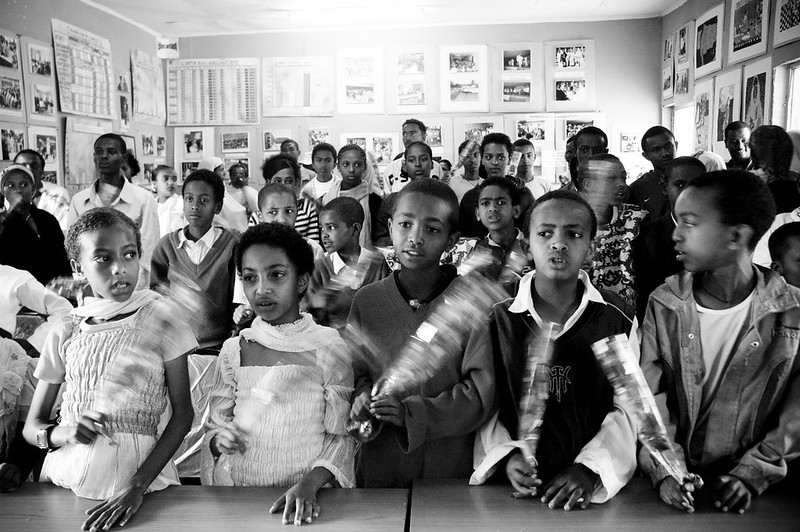 Each decade the European Union (EU) establishes an agenda to achieve goals for growth and social well-being. For the previous decade, the EU strategy focused on “smart, sustainable and inclusive growth” led by advancements in five main areas: employment, R&D and innovation, climate change and energy, education, poverty and exclusion. These five factors were essential in strengthening the EU economy. It also prepared the EU’s economic structure for the challenges of the next decade.
Each decade the European Union (EU) establishes an agenda to achieve goals for growth and social well-being. For the previous decade, the EU strategy focused on “smart, sustainable and inclusive growth” led by advancements in five main areas: employment, R&D and innovation, climate change and energy, education, poverty and exclusion. These five factors were essential in strengthening the EU economy. It also prepared the EU’s economic structure for the challenges of the next decade.
The Europe 2020 strategy set the target of lifting “at least 20 million people out of the risk of poverty.” To achieve this, the EU’s agenda included actions in stimulating education programs and employment opportunities. These actions aim to help Europeans at risk of poverty develop new skillsets. They also help Europeans find jobs that position them better in society.
For the last 10 years, poverty reduction has been a key policy component of the EU. In 2008, Europe had 116.1 million people at risk of poverty. As a result, EU members sought to reduce the number of poor Europeans to less than 96.1 million by 2020. Yet, as of 2017, the number of people at risk of poverty had only decreased to 113 million. So, what were the challenges that kept the EU from achieving its goal?
Employment in Rural Areas
The main tools the Europe 2020 strategy relied on greater access to education. Eurostat research shows that employment is crucial for ensuring adequate living standards. Furthermore, it provides the necessary base for people to live a better life. Although the EU labor market has consistently shown positive dynamics, the rates didn’t meet the Europe 2020 strategy target employment rate of 75 percent, especially in the rural areas. Jobless young people in rural Europe make up more than 30 percent of people at risk of poverty. As a result, the lack of new job openings and career paths in rural areas hindered individuals from escaping poverty and social exclusion.
Local Governance and Application of EU Strategic Policies
According to reports from 2014, the EU’s anti-poverty strategy was interpreted differently in every country. There is no common definition of poverty across all 27 member states. Therefore, the number of people at risk and their demographics vary. Moreover, EU policies were not implemented in all countries equally. Regional administrations and rural mayors are responsible for implementing EU anti-poverty policies. This localized approach resulted in a lack of coordination that was needed to correctly and efficiently realize the EU’s tools and strategies.
Education: The Winning Strategy Against Poverty
Despite these challenges, the EU showed that poverty can be addressed through education. Seen as key drivers for prosperity and welfare, education and training lie at the heart of the Europe 2020 strategy. Since higher educational attainment improves employability, which in turn reduces poverty, the EU interlinked educational targets with all other Europe 2020 goals. The Europe 2020 strategy did in fact achieve its goal of reducing the rates of people leaving education early to less than 10 percent in several EU countries. It also increased the number of workers having completed tertiary education to at least 40 percent. Both of these goals provide reasonable evidence of downsizing the risk of poverty by providing access to education.
Today, upper secondary education is the minimum desired educational attainment level for EU citizens. A lack of secondary education presents a severe obstacle to economic growth and employment in an era of rapid technological progress, intense global competition and specialized labor markets. Europeans at risk of poverty profit the most when given access to secondary education because it provides a path to staying active in society and learning marketable skills. The longer young people from rural areas pursue academic goals, the higher the chances of employment.
Moving Forward
As the Europe 2020 strategy showed, universal access to education has the potential to impact poverty across the European Union. Gaining new skillsets is one of the best ways to provide Europeans at risk of poverty and social exclusion with more opportunities for development and prospects for a better life.
– Olga Uzunova
Photo: Flickr



 The year 2006 marked the beginning of a new era for Bolivia. For decades before, Bolivia had been run by presidents that continuously marginalized the indigenous population and favored wealthy foreign corporations, making Bolivia one of the poorest countries in South America. By 2002, the percentage of Bolivians that were living in
The year 2006 marked the beginning of a new era for Bolivia. For decades before, Bolivia had been run by presidents that continuously marginalized the indigenous population and favored wealthy foreign corporations, making Bolivia one of the poorest countries in South America. By 2002, the percentage of Bolivians that were living in 

 According to the
According to the

